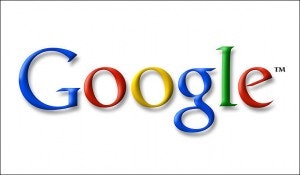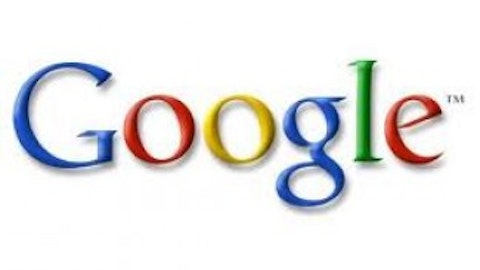
Faster internet
Google Inc (NASDAQ:GOOG) has been rolling out a fiber optic network. The company advertises that its internet speeds are 100 times faster than the average broadband internet speeds, and that its Gigabit internet will allow users to browse the internet at blazing speeds. In Google Inc (NASDAQ:GOOG)’s most recent quarterly earnings announcement the company’s CEO, Larry Page, was open to expanding its Google Fiber network, and while the business is low-margin it will at least contribute to Google Inc (NASDAQ:GOOG)’s net income and revenue incrementally.
Google Inc (NASDAQ:GOOG) has $50 billion in cash and short-term investments, and the company has a lot of short-term assets and investments on its balance sheet. The company can easily speed up the deployment of its fiber optic network, and it is likely that Google Inc (NASDAQ:GOOG) will invest aggressively into its broadband business.
Cloud
Sony Corporation (ADR) (NYSE:SNE) has been really aggressive lately. Sony announced that its PlayStation 4 console will have a lot of cloud-based features. Now, to explain each of the new cloud features would be well beyond the scope of this article, as the PlayStation 4 press release was a 2 hour long presentation. Sony is hoping to revitalize the PlayStation brand by allowing mobile devices like smart phones to directly link with the PlayStation 4 console; that way video gamers can play video games on the go using remote-accessing cloud based software technologies. Sony Corporation (ADR) (NYSE:SNE) will be deploying a heavy amount of capital into cloud-based capital expenditure.
In its latest press release Sony forecasted that the number of PlayStation 3 consoles sold will decline from 16.5 million to 10 million in 2013. The decline will be driven by a console refresh. On the other hand, Sony Corporation (ADR) (NYSE:SNE) projects that its software unit sales will increase from 266 million to 319 million in 2013. This implies that Sony Corporation (ADR) (NYSE:SNE)’s management team believes that Sony Corporation (ADR) (NYSE:SNE) game titles on its PlayStation 4 console will experience pent up demand and will be bought in large quantities going into the holiday season. At the same time, the PlayStation 3 will become a legacy device that will experience rapid declines in sales.
Amazon.com, Inc. (NASDAQ:AMZN) has recently moved into the cloud, providing cloud storage for websites and individual users. The cloud is projected to be a $210 billion industry, with 74% of business applications to be web-based by 2017, according to AT&T. In anticipation of the booming cloud industry and its various uses and applications in the real world, Amazon.com, Inc. (NASDAQ:AMZN) has increased its purchase of property and equipment by 114% year-over-year. The company’s investment into the cloud is driven by the demand for cloud based services. A good example of unique cloud based services is the PlayStation 4’s remote play service. Some of the short-comings to remote play is the limitation of data usage permitted on the 4G LTE broadband network (I believe AT&T has a 2GB limit of memory usage). Cellular networks will eventually raise data limits on its mobile services, which could spark a revolution in remote access technologies.
The beauty of the internet is that it standardizes software by turning it into web applications; almost any device can have the same software so long as it has internet connection.
Mobile
The mobile space is very contentious, with no clear winner in sight. I anticipate the primary competitors in the space going forward will be Apple Inc. (NASDAQ:AAPL), Microsoft Corporation (NASDAQ:MSFT), and Android (HTC, Samsung, Motorola, and Sony).
After using the Windows 8 operating system, I have to say I am fairly impressed. Using a touch screen enabled device that also has standard inputs like the keyboard and mouse allows for added productivity. Believe it or not, I plan on upgrading to two Windows 8 laptops that are touch screen enabled in order to speed up my work. The problem with Windows in mobile is that according to a Geek Squad technician there is no way to transfer programs from Windows 7 onto Windows 8–you can only transfer files. This could potentially hurt the adoption rate of Windows 8. I also learned that I would have to buy a separate Microsoft Corporation (NASDAQ:MSFT) Office Suite for my new computers because the Microsoft licenses may not be transferable to the new Windows 8 device.
Microsoft’s short-coming in mobile has to do with Microsoft Corporation (NASDAQ:MSFT)’s software license business model. It would help users more if Microsoft allowed better integration of cloud-based services and to turn Microsoft Office into a purely cloud enabled software suite–that way upgrading computers will not cause the conflict of buying another Microsoft Office software license. If Microsoft was to adhere to more of a subscription-based business model for its Office suite (which seems to be the trend in cloud based programs), the company could potentially gain back some of the market share it lost to Apple Inc. (NASDAQ:AAPL) in its most recent quarter.

Both Hewlett-Packard Company (NYSE:HPQ) and Dell Inc. (NASDAQ:DELL) are estimated to have reported a decline in growth along with a loss of market share. The sheer lack of demand for desktop and laptop computing is astonishing. Apple has been able to increase its market share from 9.8% to 11.6%. I attribute the success of Apple not to its reliability, but to the easiness of transferring programs and software from one device to another using Apple ID. Apple Inc. (NASDAQ:AAPL) was able to gain market share without discounting the value of its products. Therefore, from a classical economic standpoint, the demand curve shifted to the right due to technological advances rather than declining prices. To explain in laymen terms, the demand for Apple products increased without a decrease in price, which is healthy for Apple’s shareholders.
The iCloud makes it easier for Apple Inc. (NASDAQ:AAPL) users to interchangeably use Apple devices and upgrade them. It will keep the content and software collection intact. In addition to that, Apple customers can take their Mac products to an Apple Inc. (NASDAQ:AAPL) retail store in order to get advice on product upgrades and transitions.
Conclusion
The internet will become blazingly fast, which will increase the demand for cloud-based services. Because cloud-based services are becoming more predominant, anticipate a lot of web-based applications to be subscription based rather than perpetual license-based. This means people will have to buy a subscription to use software, contrary to constantly buying new software upgrades. The smart phone manufacturers will have to work with the cloud in order to make it easier for users to upgrade smart phone devices. Apple Inc. (NASDAQ:AAPL) is already ahead of the pack in that area.
The article What The Next Ten Years Of Technology Will Look Like originally appeared on Fool.com and is written by Alexander Cho.
Copyright © 1995 – 2013 The Motley Fool, LLC. All rights reserved. The Motley Fool has a disclosure policy.


